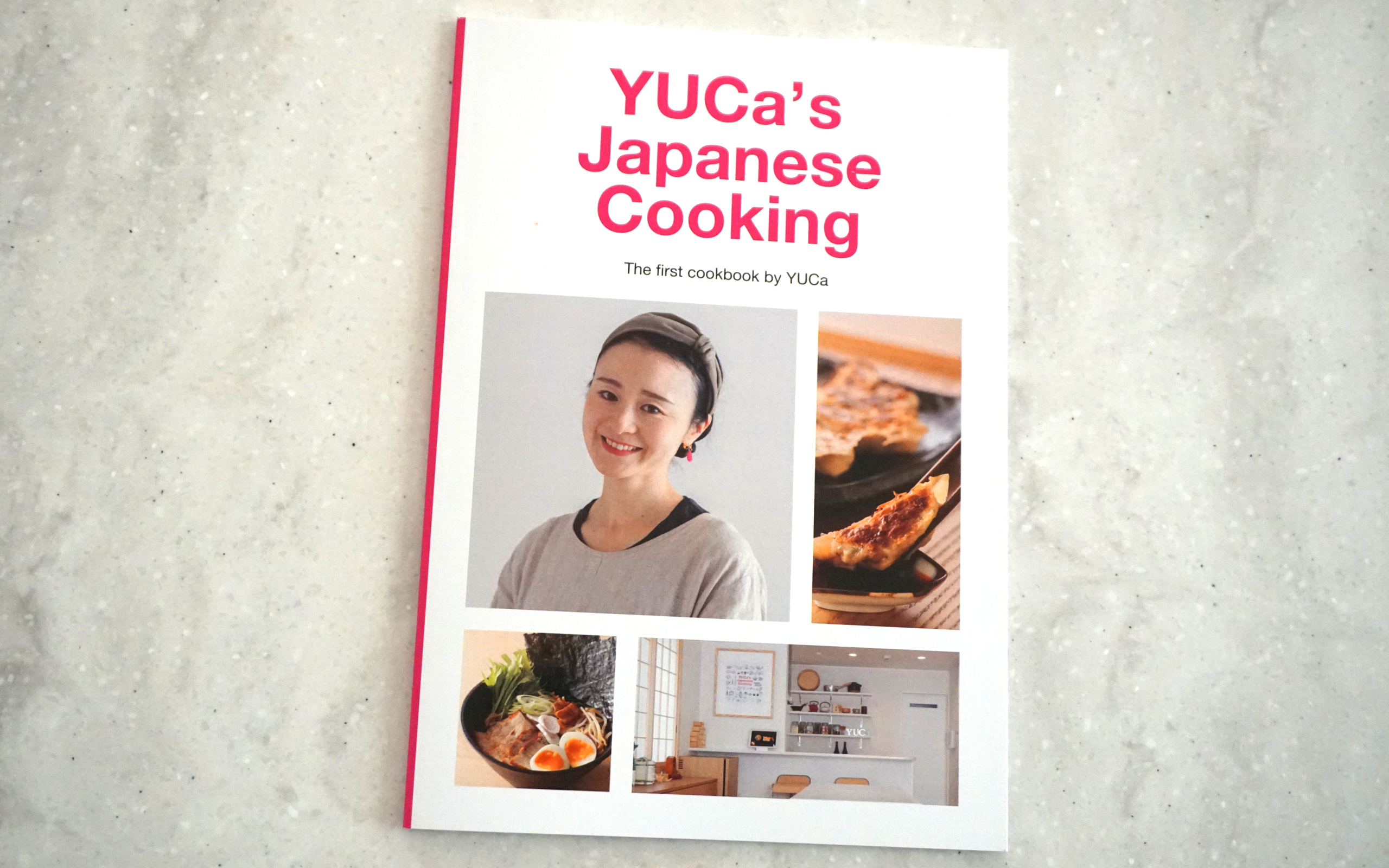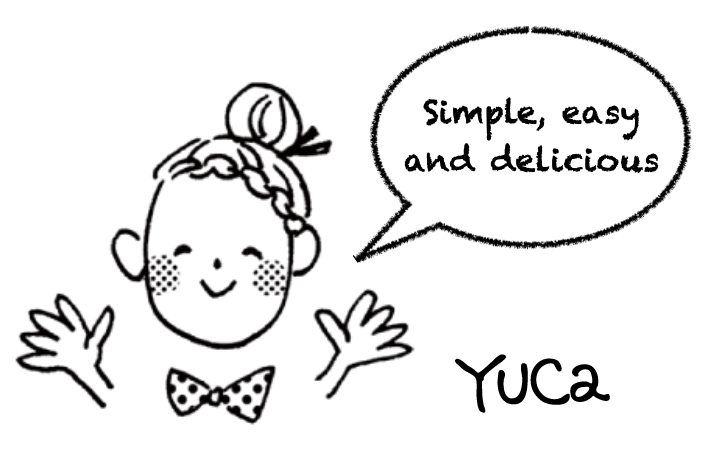Latest Posts
Miso (味噌)
Miso (味噌) is a fermented paste, which is made from soybeans and sea salt combined with koji (麹, a type of mold starter). The koji in miso can be made from any grains like brown or white rice, barley or soy beans. 80% of miso sold is kome-koji(米麹, rice koji) based.

Miso is one of the key ingredients in Japanese cuisine. Personally, I like miso because miso is a versatile seasoning and also a fermented food. I make my own miso every year at home. Once it sets, the fermentation starts and can take from 3 months to 3 years! I usually wait for 8 months. The longer the fermentation process, the darker and the more intense the flavor of miso becomes.
There are mainly 9 types of Miso in Japan. To make it easy and simple, I introduce three colors and three base ingredients of Miso.
Miso by Three Colors
1. White Miso (Shiro Miso 白味噌)

Shiro Miso is light yellow, smooth paste made from soybeans and rice koji. It generally tastes mild and light in flavor and contains the most carbohydrates of all miso and therefore it tastes the sweetest.
Sample ratio:
40% – soybean
60% – rice or barley
2. Yellow/Brown Miso (Awase Miso 合わせ味噌)

It is a combination of Red Miso and White Miso. This is the traditional miso to make miso soup everyday at home.
3. Dark Brown/Red Miso (Aka Miso 赤味噌)

The longer fermentation period (around 1 to 3 years) of White Miso produces Red Miso. It gets darker color and deep aromatic flavor and salty miso. Red Miso contains the highest levels of protein of all types of miso.
Sample ratio:
70% – soybean
30% – rice or barley
Miso by Three Base Ingredients
1. Rice Miso (Kome Miso 米味噌) : Miso made from soybeans, salt, and rice koji (米麹)
2. Barley Miso (Mugi Miso 麦味噌) : Miso made from soybeans, salt, and barley koji (麦麹). It has a very dark color and quite salty but very rich taste. In addition, it has grainy and malty in taste. Fermentation period is one to three years. Barley miso is the most common in Kyushu region, southern parts of Japan.
3. Soybean Miso (Mame Miso 豆味噌): Miso made from soybeans, salt, and the koji produced from soybeans (豆麹).
Special Miso by Region:
Sendai Miso (仙台みそ) – Miso from the Sendai area. Often called red miso.
Haccho Miso (八丁みそ) – Miso from Aichi prefecture. It has a distinctive soybean flavor but surprisingly less salty. Dark brown color and its fermentation period is at least 3 years.
Shinshu Miso (信州みそ) – Miso from Nagano prefecture. Rice-based miso.
Saikyo Miso (西京みそ) – Miso from Kyoto. Rice-based miso and typically on the sweeter side.
Kinzanji Miso (金山寺みそ) – Miso from Kyoto. It contains fermented grains and vegetables. Often slightly sweet and used as a condiment for vegetables.

Substitution:
There is no appropriate substitute for miso. However, vegimite or marmite would be the similar.
Storage:
Miso should be kept in the fridge to stop the fermentation process and preserve its freshness.
Miso doesn’t freeze so you can also store it in the freezer and use whenever you need right away.
You can keep the miso up to one year once after open the package.
Miso Recipes:
– Miso soup with tofu and wakame
– Veggie Miso Soup
– Grilled Salmon with Walnut and Miso
– Miso dengaku with konnyaku
– Tonjiru
– Nasu Dengaku
– Mackerel simmered in miso
– Daikon Dengaku Miso
and more…!
Memo :
1. Are you looking for Japanese kitchenwares and cooking tools etc? Visit YJC store on Amazon!
2. Would you like to cook many more recipes? Download Free recipe app from here! “Recipe by YJC”
Yoshoku (Japanese-style Western Food) 洋食

Yoshoku (洋食) is western food adapted to the Japanese palate. This style of cuisine started in the Meiji restoration period, 1868-1012, when, after centuries of isolation, Japanese citizens began traveling to other countries and learning about the cuisine outside of Japan. So, Yoshoku also means uniquely developed Japanese-style western dishes.
The classic Yoshoku dishes includes curry rice, ebi fry (fried shrimp), and Korokke (croquette made with potatoes and meat). Some of these influences are reflected in the popularity in Japan, of sauces such as ketchup or Worcestershire, as well as bread.
Yoshoku has a special appeal of nostalgia to the Japanese. It is an icon of the Showa period, and the never-changing taste of the classic dishes bring back people’s memories. A great place to feel the nostalgia is authentic Koshoku restaurants called “Yoshoku ya” (洋食屋) or “Yoshoku ten” (洋食店).
You can αlso eat Yoshoku dishes in other places, too. Family restaurants called “Famiresu” are casual and inexpensive chain restaurants. Okosama lunch is a popular item at famiresu. It is a plate of selected Koshoku dishes specially made for children. Some of the Japanese-style cafes called “Kissaten” (喫茶店) serve yoshoku dishes too.
Most Yoshoku dishes will be eaten with silverware instead of chopsticks, rice at Yoshoku restaurant is served on a plate instead of in a rice bowl.
Popular Yoshoku menu items:
Ebi Furai(エビフライ)Breaded and deep-fried shrimp [Recipe]

Napolitan (ナポリタン ) Spaghetti with ketchup based sauce [Recipe]
Napolitan is a classic Yoshoku dish made with spaghetti and a ketchup-based sauce. The sauce is typically is made with ketchup, onion, green pepper and mushrooms. Julienned ham, bacon or sausage is also added to the sauce.
It is normally served with grated parmesan cheese. The texture of the noodles is originally soft, but you can find firmer “al dente” nowadays.
It is said that this dish was invented after World War II by a chef in Yokohama who saw American soldiers eating spaghetti seasoned with ketchup instead of tomato sauce. Later, he improved the taste by using fresh tomatoes, and this legendary dish was born.

Omu rice(オムライス) An omelet willed with ketchup-flavored rice
Omu rice means “omelet and rice”. Flavored rice is wrapped in a thin sheet of omelet. It is shaped into an oval. Making a thin yet solid sheet of eggs is challenging for cooks. The rice is flavored with ingredients, such as chicken stock, onion, ketchup and butter. The sweetness of ketchup and onion complement the flavor of chicken.
Omu rice is also topped with ketchup. Cutting into the just-plated omu rice, you will enjoy the aroma coming out of the warm flavored rice inside.
There are variations of omu rice. The topping can be demi-glace sauce or bechamel sauce instead of ketchup. Omu curry is omu rice plated together with Japanese curry. Omu soba is noodles wrapped in a sheet of omelet instead of rice.

Hambagu(ハンバーグ)A meatloaf-like burger served with demi-glace sauce, but without a bun [Recipe]
Hambagu is a steak of a round or oval-shaped patty made with ground beef, onions, eggs and breadcrumbs. The meat may be a blend of beef and pork.
The name hambagu is said to have come from the dish made in the German city of Hamburg in 18th century. The original dish was brought to the US by German immigrants and became Hamburg steak. The Japanese eventually adopted it to their diet.
There are variety of sauces for hambagu. A blend of ketchup, oyster sauce and Worcestershire sauce is common. Other popular sauces include soy sauce and grated daikon radish, demi-glace and teriyaki. Hambagu may be topped with mushrooms, cheese, or a sunny-side egg. It is often served with rice or spaghetti.
Other Yoshoku menu items:
Kare-raisu (カレーライス) Curry with rice [Recipe]
Korokke (コロッケ) Creamy croquettes, sometimes filled with seafood such as crab
Menchi Katsu(メンチカツ) Breaded and deep-fried hamburger to which chopped onions have been added
Omuretsu(オムレツ) Omelet
Guratan(グラタン)Gratin dishes often macaroni or seafood in cream sauce with cheese
Doria (ドリア) Rice casserole with a white sauce
Hayashi raise (ハヤシライス) Beef stew in a demi-glace sauce
Bi-fu shichu (ビーフシチュー) Beef stew
Bi-fu sute-ki(ビーフステーキ) Beef steak
Roru kyabettsu(ロールキャベツ)Cabbage rolls with tomato sauce
Memo :
1. Are you looking for Japanese cookbooks and kitchenwares etc? Visit YJC store on Amazon!
2. Would you like to cook many more recipes? Download Free recipe app from here! “Recipe by YJC”
* Reference of this article : Food Sake Tokyo (The Terroir Guides) , 外国人がいちばん食べたい和食90選
YUCa’s Diary : Week 22, 2021

Weekend has come! I visited Ariake area with my family and enjoyed the sunny day.
This week, my son will be 6 years old. Wow, 6 years old?! Still can’t believe. Especially, when I watch my YouTube videos, he is still 2 to 4 years old.
Anyway, I am so happy to be his mother and learn, experiment and try new things together everyday. And, I feel thankful that he helps me out and plays with his super energetic little sister Sui-chan. I want him to make various friends and spend fun time at his kindergarten. Oh, one more thing! Eat more veggies!!! 😉

YUCa’s Diary : Week 21, 2021

I usually work from home almost every day. I go outside several times a day because of children’s private schools and kindergarten pick-ups, but I still go back and forth on the same road. That’s why, on weekends, it’s a good habit for me to go out with my family, mainly in Tokyo, and I love it. I try to eat foods that I don’t usually eat when I’m on the go, and things that I don’t make myself. That’s because I think it’s important to get new stimuli by staying outside my comfort zone.

This habit also applies to my children (especially my daughter Sui-chan). She is very interested in food and seems to like trying to taste anything, so I try to feed her as much as possible.

YUCa’s Diary : Week 20, 2021

Happy Birthday, Luigi!
Luigi became 7 years old recently. Kengo and I made easy and healthy birthday cake for him. (Technically, for Mario and Luigi.) We used sweet potato, broccoli, tofu and soy yogurt. As a final touch, Kengo put special cookies for dogs on top! They ate all of them! So happy.

Luigi is always scared and cowardly, but has a very adorable personality. Sometimes the gestures and behaviors are like cats. In my family hierarchy, I always chase after my brother Mario because I want to escape from the bottom. It’s hard to get into a fight with Mario, but he must be desperate every day.

Such a Luigi is already 7 years old. I may think that he is a puppy forever, but I want to be careful about his health and let him spend his precious time.
YUCa’s Diary : Week 19, 2021

Handmade rice cracker!
During Golden Week, My family and I went to Kawagoe and Tokorozawa in Saitama prefecture, which I had always been interested in for a long time. In Kawagoe, we visited an area called Dagashiya Yokocho (Japanese candy shop street) and baked rice crackers for the first time. I was impressed! I didn’t think it would be so difficult. The result of the rice cracker was just like patience and luck. We visited many other places and tasted various foods there. If you are interested in, check my Instagram for more details.

Sea vegetables for Japanese Cooking

Sea vegetables, a name for aquatic vegetarian more accurate than that oft-used “seaweed” have a prominent place on the Japanese table and are valued for being rich in minerals and low in calories. Kaiso (海藻) is the generic term for sea vegetables; well-known sea vegetables found frequently on the Japanese table include Kelp (kombu 昆布), Laver (Nori 海苔), sea tangle (wakame わかめ), and hijiki (no English name). Wakame is often used in miso soups or on salads; Hijiki is often simmered in soy sauce and broth (dashi). Red algae (tengusa) is another major sea vegetables. It won’t be found on the dinner plate, but it is widely consumed – it’s the major components of agar agar (kanten), a low-calorie gelatin.
Kelp:
Kelp (Kombu 昆布) is the king of sea vegetables. It is an essential component in Dashi, the broth used in many Japanese dishes. A natural source for glutamic acid, it is rich in umami. Kombu thrives in the cool, mineral-rich waters surrounding Hokkaido, Japan’s northernmost island.
Some Kombu products (not the Kombu used in dashi) include:
Komochi Kombu : Kombu layered with herring eggs.
Kombu cha : Kombu that has been dried and crushed into a powder; most often used for tea, soup stocks, or for thickening non-oil salad dressings.
Musubi Kombu : Knots of Kombu, often found in fish cake stew. (Oden)
Oboro : Shaved Kombu, used for soups Tororo : Shaved Kombu, used in soups and wrapped around rice and other items.

Laver:
Laver (Nori 海苔) is toasted and most often found surrounding roll sushi. 80% of Japan’s nori is harvested in the Ariake Bay and Seto Naikai in southern Japan. Before eating, nori may be warmed slightly over low heat to bring out its aroma.
Some nori products include:
Aonori: Green laver that has been dried and flaked; used as a topping on food such as okonomiyaki, Japanese savory pancake.
Aosa: Green laver similar to aonori.
Ajitsuke nori: Laver seasoned with soy sauce and mirin; popular at breakfast.
Mominori: Shredded bits of ajitsuke nori; often used as a garnish over noodles.
Yaki nori: Toasted nori, used for rolled sushi

Memo :
1. Are you looking for Japanese cookbooks and kitchenwares etc? Visit YJC store on Amazon!
2. Would you like to cook many more recipes? Download Free recipe app from here! “Recipe by YJC”
* Reference of this article : Food Sake Tokyo (The Terroir Guides)
Tango no Sekku (Children’s Day)

Children’s Day is a Japanese national holiday which takes place annually on May 5th, and it is part of Golden Week Holidays.
The day was originally called “Tango no Sekku”, or Boy’s Festival, was celebrated in order to wish the healthy growth of the boys in the family. Outside of their houses, families with boys fly large carp streamers called “Koinobori”. Inside they display various kinds of warrior dolls or ornamental helmets called Kabuto because they are believed to be symbols of strength and vitality. At night, people put iris leaves and roots in the bath. It is believed that it will purge noxious vapor.
In 1948, this day was designated a national holiday and renamed “Children Day”. It is now a day for boys and girls to celebrate together.

Traditional foods such as “kashiwa-mochi” and “chimaki” are eaten on that day. Kashiwamochi is steamed dumplings filled with sweet red bean paste and wrapped in oak leaves. Oak trees don’t drop their leaves until new shoots have begun to appear. The leaved represents the wish for continuation of the family line and are thus an auspicious part of these traditional sweets. (To see Kashiwamochi, please check this article.)
Chimaki is also dumplings made of glutinous rice, wrapped in bamboo leaves and tied with a piece of rush. This type of sweets came from China and is seen in various forms around Japan. I found the one at the international supermarket in town.

This year, I displayed the koinobori that Kengo created inside of the house and had special chimaki that is made of glutinous rice with chestnuts and read bean paste inside.
Read More
YUCa’s Diary : Week 18, 2021

Time to enjoy strawberry!!! My little chef Kengo and I made milk pudding topped with strawberry jelly sauce. Recently, he wants to cook with a kitchen knife. Adult knives are dangerous, so I use children’s knives. Children’s knives are dull, so you can use them with confidence. You will practice with this knife for a while.

YUCa’s Diary : Week 17, 2021

I think of this every week, but one week goes by in a blink of an eye. I shoot two recipe videos every week, but when I’m fluttering, I’m likely to forget what recipe I shot.
They always fall asleep just after the filming starts, but I am always healed by Mario and Luigi.








































